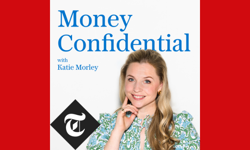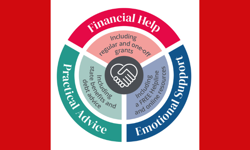If you have a loss maker, the one thing you cannot afford to do is nothing.
When I took over the loss-making business that was City Limits, the Australian entrepreneur who owned the business said we should use the salami method to tackle our problems – ‘just one slice at a time’. We went through five stages in an attempt to fix our weaknesses and play to our strengths: questioning intensely; commissioning and examining research; testing; implementing; and reviewing results.
You and your colleagues should define the level of profit you are looking for and decide what is going to be the acceptable measure of pursuing certain strategic options: Return on capital employed (ROCE); Payback period (when the cumulative net cash flow becomes zero); Discounted cash flow (DCF). Which is most useful in comparing strategies that have widely different patterns of expenditure and return? And where is the line below which you cannot make it? Which options would you consider for getting out of the market?
The multi-channel world has made it expensive to reach the general reader. A new consumer magazine launch probably costs somewhere around £15 million nowadays – three times the estimated cost just a few years ago. So, if you can, reinvent brands rather than dumping them. And if you can, go for a niche within your niche. Follow David Levin’s strategy at UBM, which is ‘expanding its digital business, launching low-maintenance, highly profitable websites for niche professional communities’.
The most noticeable characteristic of a company pursuing profit and excellence is its willingness to experiment. The mantra in America has become ‘to fail fast’. They say: learn from failure and then pursue another strategy until you find one that works for your audience.
I asked the sage Colin Morrison about how to morph from loss to profit and he replied that he fundamentally believes that you cannot change an old business. You have to rebuild from the bits that work.
Introspection
Here are the kinds of questions you need to answer: Which markets do you serve? Which markets do you own? Are you getting a reasonable share of a market you can make a living in? What level of costs is applicable to the stable revenues? What costs can be trimmed? For how long will costs exceed revenues? What are the objectives? If it’s share of audience, how quickly can you grow this before your competitors intervene? How do you think they will respond? How can revenues actually grow while changing your product?
Research
You have to research and define the market you serve. A large market can be less profitable than those that are more niche. With specialist titles like the Guitarist and the Strad, readers define themselves. The publisher has much less work in identifying potential readers and the reader revenues are many times more valuable as the buyers are educated and by nature interested in the products on the pages and the website. There is a limit to earnings but with your control of the market you can gather a range of relevant offers for your specialist public.
In some cases, very specific must-have information that was once free is now being charged for. For example, the British Venture Capital Association used to send out free its membership book (which lists all VCs) but now the reader has to pay a three-figure sum to access that data. Is this something you could try?
If you have a more general-interest magazine, there is stiffer competition for your readers and advertisers have more choice. And advertisers want proof that ads work – the web delivers quality and depth of readership data more reliably than hard copy. When I was selling ad space, I could get an ad by finding an agency person in a good mood prepared to listen to my selling environment and readership. Nowadays the agencies want provable facts and figures and would scoff at the unproven.
Review
To have effective intellectual capital management, you could begin by including some of the following areas in your review.
Current running costs:
* Would you do better by changing the mix of full-time / part-time employees?
* Are your premises too expensive and underused?
* Is the quality of the editorial higher than it need be to get in readers and attract advertisers?
* Is the quality of production too high for its purpose? (Look at the continuing success of Private Eye and the Week on low spec.)
Consider different charging models:
Total Boox allows readers to take content (despite its name, it is as easily applicable to magazines as books), removing all barriers to access and distribution, by encouraging readers to try and explore, and charging them according to what they actually read. So you are selling reading rather than selling magazines. This ‘Read first – Pay later’ approach is sensitive to the user, it generates charges reflecting the actual value received by the consumer and is a way of introducing new readers to your content.
Ask yourself if there are any different charging models you can apply to your business?
Advertising
Is there more you can do to extract from the niche? Is there a profitable niche alongside the one you publish in?
Alan Smith built up a profitable specialist consumer business targeted at home entertainment equipment enthusiasts, sometimes launching from ‘new technology’ pages or supplements he inserted in the host magazines. This way he built up a wide variety of specialist video, home cinema, camcorder and satellite TV publications which captured markets early and saw off competition. He enhanced the status of his publications by sponsorship of awards and initiated and participated in dealer exhibitions, trade association conferences and charity functions – all key industry events which put his brands back in front of readers and advertisers. Is there a way you can follow his example?
Competition
One of the many consequences of the web world is that key audiences of advertisers and consumers take information from a plethora of paid and unpaid-for media: hard copy and ebooks, multi-channel television, even radio, so the format of your communication has to be relevant and sassy. Within three years, it is predicted that there will be one billion tablets and one billion smart phones worldwide. How is your content going to get onto these platforms? By 2017, we’ll have high definition Wi-Fi and WiMax streaming anywhere, anytime and on any device. How is your content going to compete with those who go direct to screen?
Implement
I have been working with newspaper groups to try and grow circulation and loyalty by enhancing publications with relevant products that enhance the idea that readership is part of a multi-offering club.
For example, in Hungary, potential readers of JOY magazine can locate the nearest kiosk selling it by using the free JOY Shopping Fever mobile app or Facebook. This becomes especially important at times of the year when the magazine is promoting and offering discount coupons. Recent coupons have offered the reader a 25% discount at up to a thousand retail units countrywide. The combination of social media and the mobile app resulted in a dramatic increase of sales with only 3% non sold. This optimised the performance of the print run, gave greater benefits to the advertiser and was also more environmentally friendly.
How can you make your title feel more like a club?
In conclusion
There seems to me to be at least these five factors that can contribute to turning around loss makers:
* Experienced management and leadership
* Matching the attractiveness of the industry with the competitive position of the company
* Product development, including making it more amenable to licensing and syndication and selling something outside the home market
* Market penetration through strong local and regional marketing and branding
* Tight cost control
If the strategy chosen by the management and shareholders cannot be funded by the existing partners, who can you turn to? Sponsors, allies, competitors or creditors? Creditors such as the HMRC and printers will work with you to help restructure debt, but writing it off is another matter.
If you are not selling, what can you bring to a partnership? Will your new partners be there to fund expected capital calls. Can the ‘merged’ entity cut your own overhead costs to reasonable operating levels or are you looking for an organisation that can contribute significantly to the pool of editorial, advertising and operational expertise?
If you cannot do this on your own, you may need to look for new funding and / or a new operational partner. They should bring the following strengths:
* Operational skills and influence in other countries; look at the success of Time Out or the Week’s licensing programme
* Universal (and sometimes expensive) editorial appeal, such as sport, cartoons, wildlife and relevant content you can stream together with other volume rights
* A period in which management can concentrate on areas such as agreements with suppliers
* Developing a regional network for articles and advertising which strengthens your calls on the ad agencies.
* Allowing you to take advantage of a high growth opportunity but reducing (by sharing) financial risk
If you find yourself with continued operating losses, negative cash flow and the unwillingness of the existing owners to provide more capital, the negotiating position of any prospective partner is strong. It seems unlikely in these circumstances that a new partner would accept anything less than a 50% economic interest and the negotiations will be about minimising the dilution to you.
The framework of such a negotiation could take the following form:
* Prepare the best estimate of future capital required to the point where the property becomes cash generative
* Consider any other form of capital, eg. bank borrowings, which might lessen the required amount
* Negotiate with a new partner terms of capital subscription up to the amount required on the basis of minimum dilution of existing partners
* Agree with the partner more dilutive terms for any capital subscription in excess of estimated amount
Depending on the amount of economic interest conceded to provide the estimate of new capital, any further capital could be awarded a higher premium, thus increasing the dilution of the existing partners.
The negotiating position of the new partner will be affected by other factors, such as their own archive and resources and management skills.
When you are creating a new binding relationship with a partner, be cautious. Think of the possible downsides. Ensure these downsides are tactfully but effectively written into the contract. The last thing that you or your new partner wants is for the relationship to go sour. You might consider reacting positively to a problem by appointing an independent third person from the beginning of the contract on a very low annual fee. This person, experienced in the business, you can turn to within 24 hours in the event of a disagreement. Such advice can be found from the Dispute Board Federation. These guys, or girls, settle issues as they arise, not let them fester and boil into litigation. Pay yourselves not lawyers.
Negotiation may also be affected by a new partner’s desire to wind out operations throughout the world by either forming alliances with other countries’ magazines or by licensing.
If the implementation of cutting new revenue models fails, be prepared to call time and think about whether it is worth selling the title knowing that you are passing on to a potential competitor your market and know how. But if you are really lucky, you might stumble across a Russian oligarch who has a passion for your property.










